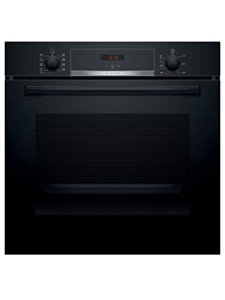Guide To Builtin Ovens: The Intermediate Guide Towards Builtin Ovens
페이지 정보
작성자 Camille 작성일25-05-18 08:50 조회58회 댓글0건관련링크
본문

The Rise of Built-in Ovens: Enhancing Modern Kitchens
In the ever-evolving world of home improvement, built-in ovens have emerged as a staple in modern kitchen design. These appliances not just use a smooth and seamless aesthetic however likewise contribute considerably to the functionality and performance of home cooking. This article dives into the numerous aspects of built-in ovens, including their advantages, types, installation considerations, and upkeep, Builtin Oven along with regularly asked questions to provide a thorough overview.

What is a Built-in Oven?
A built-in oven is a home appliance developed to be installed into kitchen cabinets, providing it a streamlined look and maximizing counter area. Unlike standard freestanding ovens, which stand alone and are often large, built-in ovens fit flush with cabinets for a more integrated appearance. They are readily available in numerous sizes, styles, and functions, catering to a large range of culinary needs and kitchen designs.
Benefits of Built-in Ovens
Built-in built oven ovens included many advantages that make them appealing to homeowners. Below are a few of the essential advantages:
- Space Efficiency: Built-in ovens conserve counter area while optimizing kitchen layouts.
- Personalized Design: They can be integrated hob and oven into cabinets, permitting house owners to tailor looks according to individual taste.
- Enhanced Performance: Many built-in ovens come equipped with innovative cooking innovations, permitting much better heat distribution and faster cooking times.
- Accessibility: Their setup at eye level makes it easier to inspect food without bending down, offering greater convenience and safety.
- Resale Value: A modern-day, well-designed kitchen can improve home worth, making built-in ovens a financial investment worth thinking about.
Types of Built-in Ovens
Built-in ovens can be categorized based upon their style and function. The following list lays out the common types of built in ovens-in ovens offered on the marketplace:
- Single Ovens: A standard design that includes one cooking compartment.
- Double Ovens: These included 2 different compartments, which permit cooking multiple meals at different temperature levels.
- Wall Ovens: builtin Oven Installed into the wall for a space-saving option, these ovens offer benefit and accessibility and can be either single or double.
- Steam Ovens: These utilize steam for moist cooking and are typically preferred for healthier meal preparation.
- Convection Ovens: Designed with a fan that distributes hot air, making sure even cooking and browning.
| Type | Description | Suitable For |
|---|---|---|
| Single Oven | One cooking compartment for basic baking and roasting. | Little homes and kitchens. |
| Double Oven | 2 compartments for synchronised cooking of different dishes. | Large families with diverse menus. |
| Wall Oven | Built into the wall for simple access. | Space-conscious kitchens. |
| Steam builtin oven (read this blog post from Blogbright) | Cooks using steam for much healthier options. | Health-conscious people. |
| Stove | Circulates hot air for even cooking and much faster results. | Baking lovers and chefs. |
Installation Considerations
Selecting to install a built-in oven involves several considerations to make sure that it fits flawlessly within the kitchen. Important factors include:
- Cabinet Dimensions: Accurate measurement of the cabinet area needed for the oven is vital for an appropriate fit.
- Power Supply: built in electric ovens-in ovens generally require a dedicated power supply; speaking with a licensed electrician might be necessary.
- Ventilation: Ensure that the oven's ventilation requirements are met to promote safe operation.
- Regional Building Codes: Compliance with local codes is essential when setting up any kitchen appliance.
It's strongly advised that setup be carried out by experts to ensure safety and adherence to manufacturer specs.
Maintenance of Built-in Ovens
Keeping built-in ovens is important to guarantee their durability and operation. Below are some pointers for effective upkeep:
- Regular Cleaning: Wipe down surfaces after each usage to avoid accumulation; think about self-cleaning options if readily available.
- Inspect Seals: Inspect the oven door seals routinely for wear and tear to keep efficiency and prevent heat loss.
- Adjust Temperature: Occasionally check and change oven temperature level settings if cooking outcomes are inconsistent.
- Expert Servicing: Schedule regular maintenance with certified specialists for electrical elements and deeper cleansing.
Frequently Asked Questions (FAQs)
Q1: How do I select the ideal size built-in oven for my kitchen?
A1: Measure the available cabinet area and think about the cooking routines of your family. Single or double ovens are common options based on meal preparation requirements.
Q2: Are built-in ovens more energy-efficient than freestanding ones?
A2: Built-in ovens can be more energy-efficient due to better insulation and advanced cooking innovation; nevertheless, actual efficiency depends on the particular model and usage.
Q3: Can built-in ovens be installed throughout the kitchen?
A3: Built-in ovens need specific cabinetry and might need a devoted power source, so preparing their placement carefully within the kitchen layout is essential.
Q4: What type of maintenance do built-in ovens require?
A4: Regular cleansing, checking door seals, calibrating temperature levels, and professional maintenance as needed are all parts of proper maintenance.
Built-in ovens are an amazing addition to contemporary cooking areas, providing both visual and practical advantages. Their space-saving style, personalized choices, and advanced functions cater to varied cooking needs. When thinking about a built-in oven, homeowners ought to consider their particular cooking choices, kitchen layout, and maintenance abilities. By doing so, they would be making a valuable financial investment in their home, increasing both functionality and design.
댓글목록
등록된 댓글이 없습니다.












